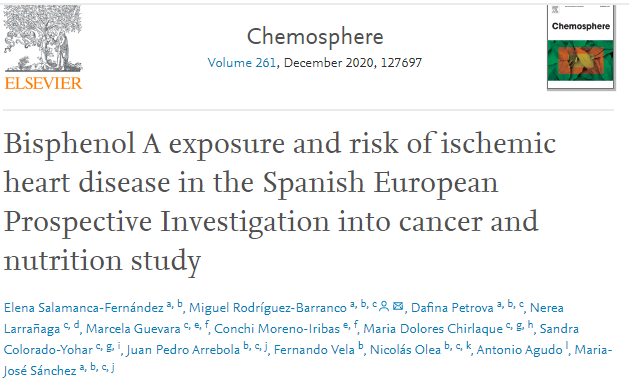
Background
Cardiovascular disease, particularly ischemic heart disease (IHD), is the leading cause of mortality worldwide. Bisphenol A (BPA) is considered an endocrine disruptor and obesogen, present in numerous products of daily use. The aim of this study was to assess the potential association of serum BPA concentrations and the risk of incident IHD in a sub-cohort of the Spanish European Prospective Investigation into Cancer and Nutrition (EPIC).
Methods
We designed a case-cohort study within the EPIC-Spain cohort. The population consisted of 4636 participants from 4 EPIC-Spain centers (946 IHD cases and 3690 sub-cohort participants). BPA exposure was assessed by means of chemical analyses of serum samples collected at recruitment. Follow-up was performed by linking with national and regional databases and reviewing patients’ clinical records. Cox Proportional Hazards Models were used for the statistical analyses.
Results
Median follow-up time was 16 years and 70% of the participants showed detectable BPA values (>0.2 ng/ml). Geometric mean (GM) values of cases and sub-cohort were 1.22 ng/ml vs 1.19 ng/ml respectively (p = 0.90). Cox regression models showed no significant association of BPA serum levels and IHD, acute myocardial infarction or angina pectoris risk.
Conclusions
We evidenced a similar percentage of detection of BPA among cases and sub-cohort participants from our population, and no clear association with IHD risk was observed. However, further investigation is needed to understand the influence of BPA on IHD risk.


